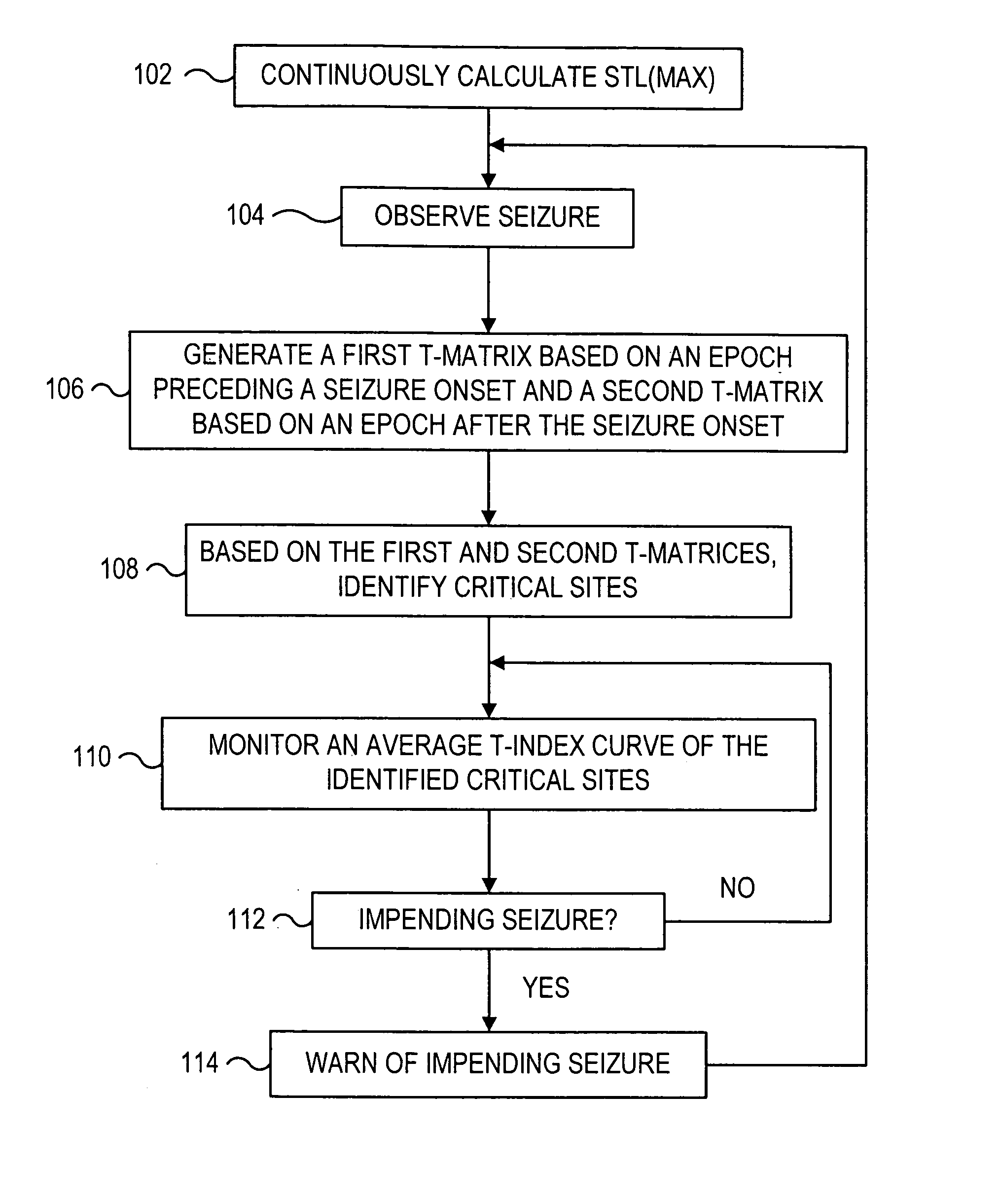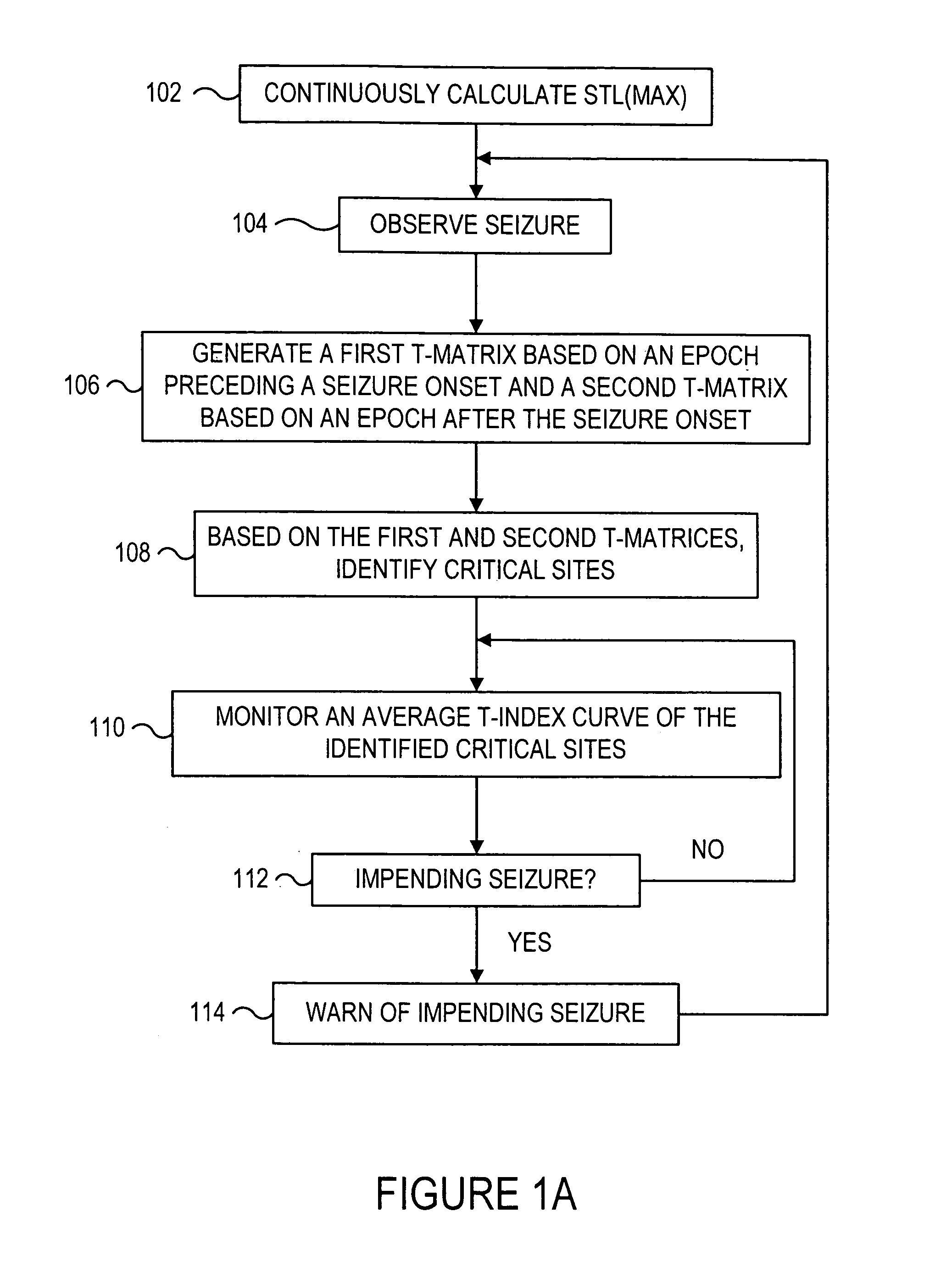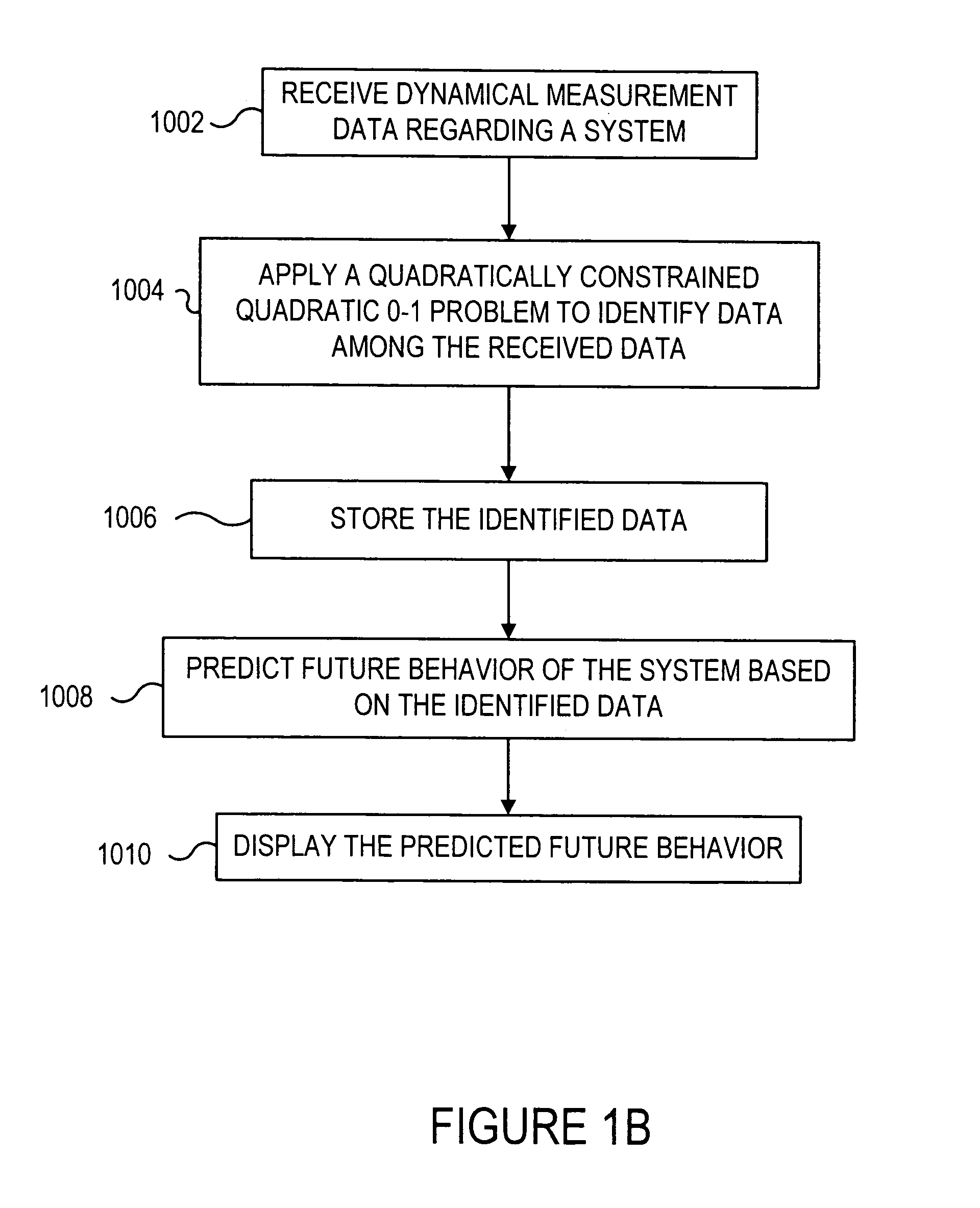Optimization of spatio-temporal pattern processing for seizure warning and prediction
a spatio-temporal pattern and seizure technology, applied in the field of seizure warning and prediction prediction, can solve the problems of no established method for predicting seizure onset, the individual afflicted with epilepsy is likely to experience repeated seizures, and the medical treatment is less effective with other forms of epilepsy, so as to improve the prediction of subsequent seizures
- Summary
- Abstract
- Description
- Claims
- Application Information
AI Technical Summary
Benefits of technology
Problems solved by technology
Method used
Image
Examples
Embodiment Construction
[0026]FIG. 1A shows an exemplary method for predicting epileptic seizures, which can also be used to predict behavior or change in state of any complex system reflected in multi-dimensional time series information about the system. In a first step 102, a dynamical measure such as STLmax is continuously calculated. In an exemplary method, this calculation is continuously or periodically performed while the other steps shown in FIG. 1 are performed. In a next step 104, a seizure is observed. In a next step 106, one or more measures of statistical difference between the dynamical measures are generated, for example first T-matrix can be generated based on an epoch preceding a seizure onset, and a second T-matrix can be generated based on an epoch after the seizure onset. In a next step 108, critical sites are identified based on the measures of statistical difference, for example the first and second T-matrices. In particular, the measures of statistical difference can be supplied in a...
PUM
 Login to View More
Login to View More Abstract
Description
Claims
Application Information
 Login to View More
Login to View More - R&D
- Intellectual Property
- Life Sciences
- Materials
- Tech Scout
- Unparalleled Data Quality
- Higher Quality Content
- 60% Fewer Hallucinations
Browse by: Latest US Patents, China's latest patents, Technical Efficacy Thesaurus, Application Domain, Technology Topic, Popular Technical Reports.
© 2025 PatSnap. All rights reserved.Legal|Privacy policy|Modern Slavery Act Transparency Statement|Sitemap|About US| Contact US: help@patsnap.com



